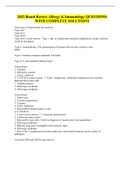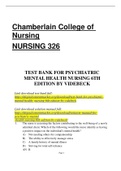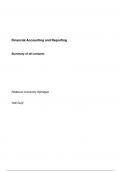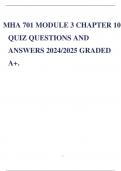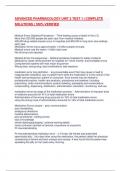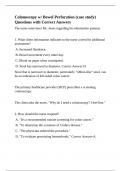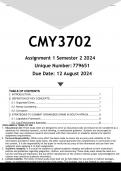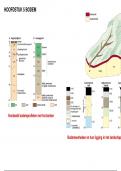Exam (elaborations)
2022 Board Review Allergy & Immunology QUESTIONS WITH COMPLETE SOLUTIONS
- Course
- ACAAI
- Institution
- Liberty University
Four types of hypersensitivity reactions Type one? Type two? Type three? Type four? correct answer: Type 1; IgE or complement mediated anaphylactic, atopic reactions (early & late phase) Type 2; Autoantibody, C3b opsonization of normal cells activate cytotoxic cells. MAC Type 3; Immune...
[Show more]
